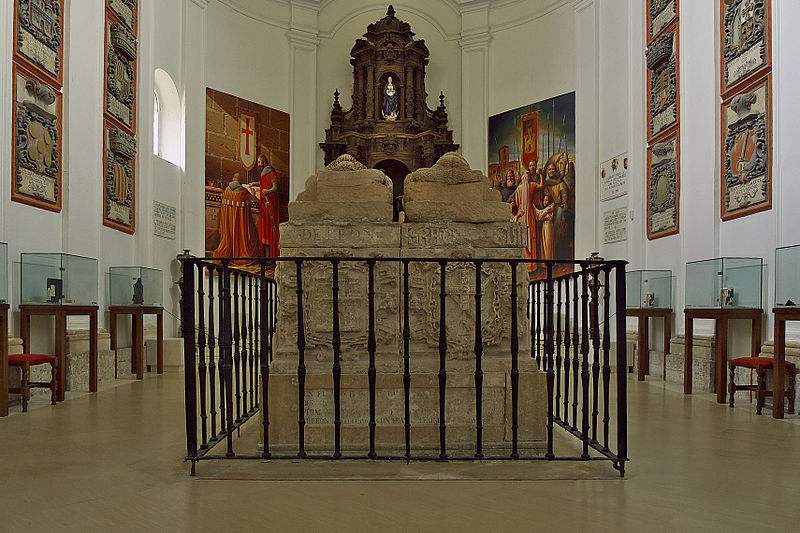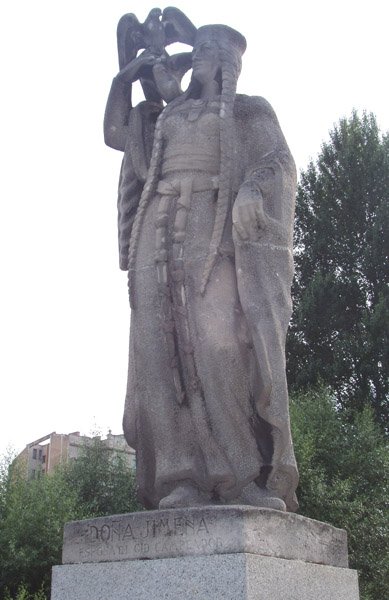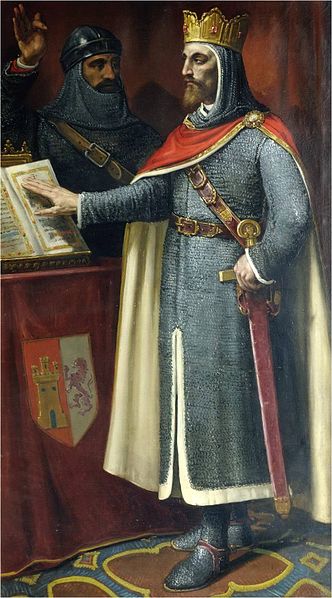 Rodrigo died at Valencia…. After his death his sorrowing wife remained in Valencia with a great company of knights and footsoldiers. When the news of his death spread all the Saracens who lived across the seas mustered a considerable army and marched against Valencia. They laid siege to it on all sides and attacked the city for seven months.
Rodrigo died at Valencia…. After his death his sorrowing wife remained in Valencia with a great company of knights and footsoldiers. When the news of his death spread all the Saracens who lived across the seas mustered a considerable army and marched against Valencia. They laid siege to it on all sides and attacked the city for seven months.
His wife, deprived of so great a husband, finding herself in her affliction so hard-pressed and unable to find the remedy of consolation in her unhappiness, sent the bishop of the city to King Alfonso ask him for pity’s sake to help her. On receiving this appeal the king came swiftly to Valencia with his army. Rodrigo’s unhappy wife received him with the greatest joy, and kissed his feet.
She implored him to help her and all the Christians who were with her. But the king could find no one among his men who might hold the city and defend it from the Saracens; for it was far removed from his kingdom. So he returned to Castile, taking with him Rodrigo’s wife with the body of her husband, and all the Christians who were then there, with their household goods and riches. When they had all left Valencia the king ordered the whole city to be burnt: then he led all these people to Toledo. The Saracens, who had fled [at] the king’s arrival and abandoned the siege, re-entered the city soon after the king’s departure, although it was burnt, and resettled it and all its territories….

Photo of the tombs of El Cid and Doña Jimena in the Monastery o San Pedro of Cardeña, by Jose Luis Filpo Cabana.
Rodrigo’s wife, accompanied by her husband’s knights, bore his body to the monastery of San Pedro de Cardeña. There she gave it honorable burial, granting for the sake of his soul no small gifts to the monastery.
Simon Barton and Richard Fletcher, The World of El Cid: Chronicles of the Spanish Reconquest (Manchester: Manchester University Press, 2000), 146-7.
Short Stories on Honor, Chivalry, and the World of Nobility—no. 510











